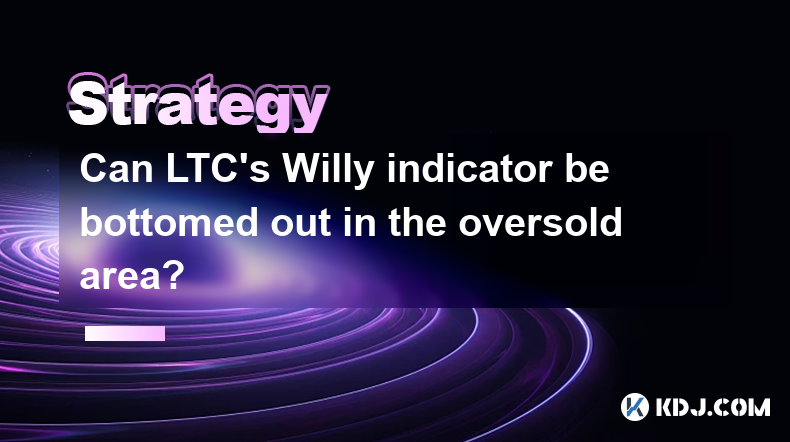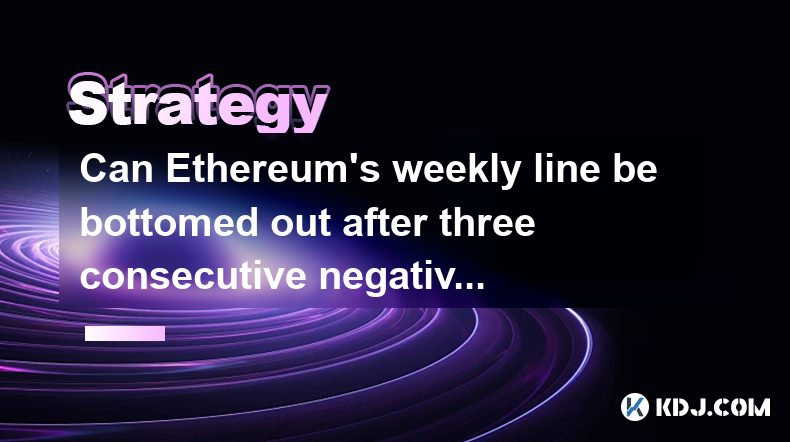-
 Bitcoin
Bitcoin $93,400.4169
-0.07% -
 Ethereum
Ethereum $1,758.0123
-2.17% -
 Tether USDt
Tether USDt $1.0003
0.01% -
 XRP
XRP $2.1919
-1.20% -
 BNB
BNB $600.1633
-1.00% -
 Solana
Solana $151.9829
1.13% -
 USDC
USDC $1.0000
0.00% -
 Dogecoin
Dogecoin $0.1801
1.82% -
 Cardano
Cardano $0.7115
2.37% -
 TRON
TRON $0.2436
-0.83% -
 Sui
Sui $3.3769
10.54% -
 Chainlink
Chainlink $14.8852
-0.26% -
 Avalanche
Avalanche $22.1027
-0.70% -
 Stellar
Stellar $0.2802
5.45% -
 UNUS SED LEO
UNUS SED LEO $9.2072
0.82% -
 Shiba Inu
Shiba Inu $0.0...01381
2.58% -
 Toncoin
Toncoin $3.1898
0.66% -
 Hedera
Hedera $0.1863
3.71% -
 Bitcoin Cash
Bitcoin Cash $353.2783
-2.63% -
 Polkadot
Polkadot $4.2549
4.30% -
 Litecoin
Litecoin $83.7047
-0.38% -
 Hyperliquid
Hyperliquid $18.8110
1.77% -
 Dai
Dai $1.0000
0.01% -
 Bitget Token
Bitget Token $4.4378
-1.47% -
 Ethena USDe
Ethena USDe $0.9994
0.01% -
 Pi
Pi $0.6537
-0.97% -
 Monero
Monero $229.4196
-0.24% -
 Pepe
Pepe $0.0...08703
-0.51% -
 Uniswap
Uniswap $5.7568
-3.76% -
 Aptos
Aptos $5.4822
1.82%
What key resistance level can LTC break to add positions?
Litecoin often follows Bitcoin's trends but has unique resistance levels like $150 and $200; breaking $140 could signal a strong bullish trend for adding positions.
Apr 23, 2025 at 07:00 pm

Understanding Litecoin (LTC) and Resistance Levels
Litecoin (LTC) is a well-known cryptocurrency that often follows similar market trends as Bitcoin but with its unique characteristics. When considering adding positions to LTC, understanding resistance levels is crucial. A resistance level is a price point at which an asset tends to face selling pressure, preventing it from rising further. Breaking through a key resistance level can signal a strong bullish trend, making it an opportune time to add positions.
Identifying Key Resistance Levels for LTC
To determine the key resistance levels for LTC, it's essential to analyze historical price data and current market trends. Technical analysis tools such as moving averages, trend lines, and chart patterns can help identify these levels. For instance, if LTC has consistently struggled to move past a certain price point, that level is likely a significant resistance.
Historical Resistance Levels of LTC
Historically, LTC has faced several key resistance levels. One notable resistance level for LTC has been around $150. This level has been a significant barrier in the past, with LTC often facing substantial selling pressure around this price. Another resistance level to consider is $200, which has also acted as a strong ceiling for LTC prices in previous market cycles.
Current Market Conditions and Resistance Levels
In the current market environment, LTC's resistance levels can be influenced by various factors such as overall market sentiment, Bitcoin's performance, and macroeconomic conditions. As of the latest data, LTC has been trading around $120 to $130. A key resistance level to watch in the near term is $140. If LTC manages to break through this level, it could signal a strong upward momentum.
Strategies for Adding Positions After Breaking Resistance
Once LTC breaks through a key resistance level, it's important to have a strategy in place for adding positions. Here are some steps to consider:
- Monitor the Breakout: Confirm that LTC has indeed broken through the resistance level with significant volume. A breakout without sufficient volume might be a false signal.
- Set Entry Points: Determine your entry points based on the new support levels that form after the breakout. For instance, if LTC breaks through $140, the new support might be around $135.
- Use Stop-Loss Orders: To manage risk, set stop-loss orders below the new support level. This can help protect your investment if the price reverses.
- Diversify: Consider diversifying your portfolio by adding positions in other cryptocurrencies that might also benefit from the same market conditions.
Technical Indicators to Confirm Breakout
To increase the confidence in your decision to add positions after a breakout, it's helpful to use technical indicators. Some commonly used indicators include:
- Relative Strength Index (RSI): An RSI above 70 might indicate that LTC is overbought, while an RSI below 30 might suggest it's oversold.
- Moving Averages: A bullish crossover of short-term moving averages over long-term moving averages can confirm a breakout.
- Volume: High trading volume during the breakout can validate the strength of the move.
Psychological Factors and Market Sentiment
Psychological factors and market sentiment also play a significant role in whether LTC can break through a resistance level. If the overall sentiment in the cryptocurrency market is bullish, it can provide the necessary momentum for LTC to surpass key resistance levels. Conversely, bearish sentiment can lead to increased selling pressure, making it more challenging for LTC to break through.
Case Studies of Previous Breakouts
Analyzing past breakouts can provide valuable insights into what might happen if LTC breaks through a key resistance level. For example, in early 2021, LTC broke through the $150 resistance level, leading to a significant rally that saw prices climb to $400. This breakout was supported by strong market sentiment and a general uptrend in the cryptocurrency market.
Practical Example of Adding Positions
Let's walk through a practical example of adding positions to LTC after it breaks through a resistance level. Suppose LTC is trading at $135 and the key resistance level to watch is $140.
- Monitor the Breakout: Keep an eye on LTC's price and volume as it approaches $140. If LTC breaks through this level with high volume, it's a positive sign.
- Set Entry Points: After the breakout, consider entering positions around $142 to $145, as these prices might represent the new support levels.
- Use Stop-Loss Orders: Set stop-loss orders at $138 to protect against a potential reversal.
- Diversify: Consider adding positions in other cryptocurrencies that might also benefit from the same market conditions, such as Bitcoin or Ethereum.
Frequently Asked Questions
Q: How can I identify a false breakout in LTC?
A: A false breakout in LTC can be identified by several factors. If the price breaks through a resistance level but quickly reverses back below it, this could be a false breakout. Additionally, if the breakout occurs with low trading volume, it's less likely to be a genuine breakout. Monitoring technical indicators such as the RSI and moving averages can also help confirm or refute a breakout.
Q: What are the risks of adding positions after a breakout?
A: Adding positions after a breakout carries several risks. The primary risk is that the breakout might be false, leading to a price reversal. Additionally, if the overall market sentiment turns bearish, it could negatively impact LTC's price. It's essential to use risk management tools like stop-loss orders to mitigate these risks.
Q: How does Bitcoin's performance affect LTC's resistance levels?
A: Bitcoin's performance can significantly influence LTC's resistance levels. Since Bitcoin often leads the cryptocurrency market, a strong bullish trend in Bitcoin can provide the necessary momentum for LTC to break through its resistance levels. Conversely, if Bitcoin experiences a downturn, it can lead to increased selling pressure on LTC, making it more challenging to break through resistance levels.
Q: Can macroeconomic factors influence LTC's ability to break resistance levels?
A: Yes, macroeconomic factors can influence LTC's ability to break resistance levels. For instance, positive economic news or favorable regulatory developments can boost investor confidence, leading to increased buying pressure on LTC. Conversely, negative economic indicators or adverse regulatory actions can lead to a bearish sentiment, making it more difficult for LTC to break through resistance levels.
Disclaimer:info@kdj.com
The information provided is not trading advice. kdj.com does not assume any responsibility for any investments made based on the information provided in this article. Cryptocurrencies are highly volatile and it is highly recommended that you invest with caution after thorough research!
If you believe that the content used on this website infringes your copyright, please contact us immediately (info@kdj.com) and we will delete it promptly.
- SEC Delays Decision On Canary Capital's HBAR Exchange-Traded Fund
- 2025-04-25 10:50:12
- BlockDAG (BDAG) Flips the Script, Resetting Price Ahead of Mainnet Launch
- 2025-04-25 10:50:12
- NYU professor Scott Galloway on Thursday detailed a “transnational oligarchy”
- 2025-04-25 10:45:12
- Zypher Network Partners with DeAgent AI to Redefine the Future of Decentralized Intelligence
- 2025-04-25 10:45:12
- LBank Explores the Possible Resurgence of the Meme Coin Market as a Leading Crypto Narrative
- 2025-04-25 10:40:12
- Trump's Poll Numbers Might Be Sinking — But His Crypto Coin and Media Empire Are On The Rise
- 2025-04-25 10:40:12
Related knowledge

What does the surge in SOL's cross-chain bridge inflows represent?
Apr 25,2025 at 09:00am
The recent surge in SOL's cross-chain bridge inflows represents a significant trend within the cryptocurrency ecosystem, particularly for Solana (SOL). This phenomenon highlights increased activity and interest in moving assets from other blockchains to Solana, indicating growing confidence in its network and ecosystem. Cross-chain bridges are essential...

Is the increase in LINK's net outflow from exchanges a positive signal?
Apr 24,2025 at 02:35pm
The recent increase in LINK's net outflow from exchanges has sparked discussions within the cryptocurrency community about its implications for the token's future performance. LINK, the native token of the Chainlink decentralized oracle network, has seen a notable shift in its net outflow from exchanges, which many interpret as a positive signal. This a...

Is LTC's UTXO age distribution useful for judging buying and selling points?
Apr 23,2025 at 05:42pm
Is LTC's UTXO age distribution useful for judging buying and selling points? Understanding the UTXO (Unspent Transaction Output) age distribution of Litecoin (LTC) can provide valuable insights into the behavior of its holders and potentially help in making informed decisions about buying and selling points. The UTXO age distribution refers to the age o...

How to use trading volume to determine the buying and selling timing of LINK?
Apr 25,2025 at 02:07am
How to Use Trading Volume to Determine the Buying and Selling Timing of LINK? Trading volume is a crucial metric in the cryptocurrency market that can provide valuable insights into the buying and selling behavior of traders. When it comes to Chainlink (LINK), understanding how to analyze trading volume can help you make more informed decisions about wh...

Can LTC's Willy indicator be bottomed out in the oversold area?
Apr 24,2025 at 01:43pm
Understanding the Willy IndicatorThe Willy indicator, also known as the Willy ratio, is a technical analysis tool used in the cryptocurrency market to gauge the sentiment of a particular asset, in this case, Litecoin (LTC). It is calculated by dividing the total trading volume of an asset by its market capitalization. The resulting ratio helps traders u...

Can Ethereum's weekly line be bottomed out after three consecutive negatives?
Apr 24,2025 at 10:56am
In the dynamic world of cryptocurrencies, understanding market trends and patterns is crucial for investors and traders alike. One of the significant aspects of technical analysis in this field is the examination of weekly line charts, particularly for major cryptocurrencies like Ethereum. The question of whether Ethereum's weekly line can be bottomed o...

What does the surge in SOL's cross-chain bridge inflows represent?
Apr 25,2025 at 09:00am
The recent surge in SOL's cross-chain bridge inflows represents a significant trend within the cryptocurrency ecosystem, particularly for Solana (SOL). This phenomenon highlights increased activity and interest in moving assets from other blockchains to Solana, indicating growing confidence in its network and ecosystem. Cross-chain bridges are essential...

Is the increase in LINK's net outflow from exchanges a positive signal?
Apr 24,2025 at 02:35pm
The recent increase in LINK's net outflow from exchanges has sparked discussions within the cryptocurrency community about its implications for the token's future performance. LINK, the native token of the Chainlink decentralized oracle network, has seen a notable shift in its net outflow from exchanges, which many interpret as a positive signal. This a...

Is LTC's UTXO age distribution useful for judging buying and selling points?
Apr 23,2025 at 05:42pm
Is LTC's UTXO age distribution useful for judging buying and selling points? Understanding the UTXO (Unspent Transaction Output) age distribution of Litecoin (LTC) can provide valuable insights into the behavior of its holders and potentially help in making informed decisions about buying and selling points. The UTXO age distribution refers to the age o...

How to use trading volume to determine the buying and selling timing of LINK?
Apr 25,2025 at 02:07am
How to Use Trading Volume to Determine the Buying and Selling Timing of LINK? Trading volume is a crucial metric in the cryptocurrency market that can provide valuable insights into the buying and selling behavior of traders. When it comes to Chainlink (LINK), understanding how to analyze trading volume can help you make more informed decisions about wh...

Can LTC's Willy indicator be bottomed out in the oversold area?
Apr 24,2025 at 01:43pm
Understanding the Willy IndicatorThe Willy indicator, also known as the Willy ratio, is a technical analysis tool used in the cryptocurrency market to gauge the sentiment of a particular asset, in this case, Litecoin (LTC). It is calculated by dividing the total trading volume of an asset by its market capitalization. The resulting ratio helps traders u...

Can Ethereum's weekly line be bottomed out after three consecutive negatives?
Apr 24,2025 at 10:56am
In the dynamic world of cryptocurrencies, understanding market trends and patterns is crucial for investors and traders alike. One of the significant aspects of technical analysis in this field is the examination of weekly line charts, particularly for major cryptocurrencies like Ethereum. The question of whether Ethereum's weekly line can be bottomed o...
See all articles























































































